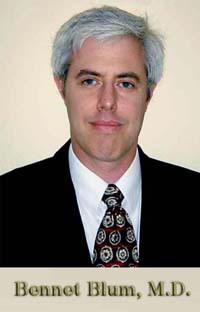ELDER ABUSE Undue InfluenceVictims of Harmful PersuasionFrom Safe Seniors Newsletter for Prevention of Alder Abuse,Winter 06,Vol.8, issue 4.
n elderly man with Parkinson’s disease had been thinking of getting help in his home for himself and his forgetful wife. Then help knocked on their door. A woman seeking work as a maid was going door-to-door in the neighborhood. He invited her in. Over several months and after the wife’s death, this caregiver convinced the man to buy her a Mercedes. She also talked him into changing his will, bequeathing everything to her, her daughter and her siblings. Fortunately, five different attorneys refused to draft a new will; they questioned his mental capacity. Unfortunately, the caregiver convinced him to marry her. This real San Diego County case was presented at a workshop recently by Dr. Bennett Evidence of undue influence is now being used in civil cases where an older person may have agreed to give money or other assets to someone, but the elder was an unwitting victim of harmful persuasion. Legislation is being pursued in California to use undue influence as a theory of prosecution in criminal cases. We are all susceptible to manipulation, but there are certain conditions that are indicators of greater vulnerability, according to Dr. Blum. He uses the acronym “IDEAL” to show the process of biological, psychological and social factors that commonly coexist in undue influence situations. “I” stands for isolation, which includes people who are homebound or loners, but also people who have medical or mental disorders, problems traveling or difficulties communicating. “D” is dependency, such as depending on someone else for assistance and care with daily tasks. This can also include depending on someone else for information. “E” is emotional manipulation and includes promises and threats that play upon someone’s fears and feelings. “E” can also stand for exploitation of a vulnerability, such as giving alcohol to an alcoholic in exchange for something, or misrepresenting documents to someone who can’t see well or is cognitively impaired. “A” is acquiescence, when the victim starts going along with the perpetrator and agrees to do what is demanded or requested. “L” is loss, which can be loss of assets, or physical or emotional harm. Determination of loss will be particularly important for elder abuse prosecution. Frequently with undue influence situations, the perpetrator uses emotional manipulation and/or exploitation of a vulnerability to build upon a victim’s isolation and dependency to the point when the victim acquiesces and eventually suffers some type of loss. Dr. Blum emphasizes that undue influence isn’t any one action by a perpetrator, but a pattern of behaviors, a process of manipulation. With time, these criminals create an “us versus them” mindset with victims, further isolating them from others. Few of these undue influence cases ever come to light. Victims may never realize they’ve been conned, or they are too ashamed to admit it, or they die before anything is discovered. Victims are often physically impacted by the stress of being frightened and the humiliation. When these cases do surface, prosecution could be difficult because of the shame or frailty of the victims. Dr. Blum has been able to successfully use his IDEAL model to show juries how the victim was influenced and harmed, even if the victim is not able to testify or would not make a reliable witness. Actually, undue influence is easier to prove if the victim has some cognitive impairment, he says. The concepts behind the IDEAL model could also be used to help family, friends, professionals intervene in situations where someone is being unduly influenced. If people outside this manipulation can find ways to make the victim less isolated and reduce the dependency on the perpetrator, then the emotional manipulation could be impacted. The longer the manipulation has been going on and the more impaired and dependent the victim, the more difficult it may be to intervene.In the San Diego case discussed earlier, Adult Protective Services becameinvolved when a caller expressed concern about the man because the new wife would no longer allow him to speak to friends. The wife moved the victim away, into an efficiency apartment, essentially abandoning him. He was found, seriously ill. An APS worker overheard the wife telling her sister that she planned to take the victim out of the country to stop further investigation. In the end, the wife was prosecuted and pled guilty to felony financial elder abuse and was ordered to pay full restitution. The marriage was annulled. To learn more about undue influence and the IDEAL model, see Dr. Blum’s Web site: www.bennettblummd.com HELP STOP ELDER ABUSE -ELDER ABUSE REPORT LINE 1-800-510-2020 |
|
![]()
Salud+HealthInfo is for information and educational purposes only. You should not rely on this information as a substitute for personal medical attention, diagnosis or hands-on treatment. If you are concerned abut your health or that of a child, please consult your family's physician or health provider immediately and do not try to diagnose yourself.
 info
info
 Blum, a geriatric psychiatrist and nationally known expert witness in elder abuse cases. He is a specialist in what’s known as “undue influence,” a method by which someone creates a false sense of goodwill, then betrays that, often committing the crime of elder abuse.
Blum, a geriatric psychiatrist and nationally known expert witness in elder abuse cases. He is a specialist in what’s known as “undue influence,” a method by which someone creates a false sense of goodwill, then betrays that, often committing the crime of elder abuse.